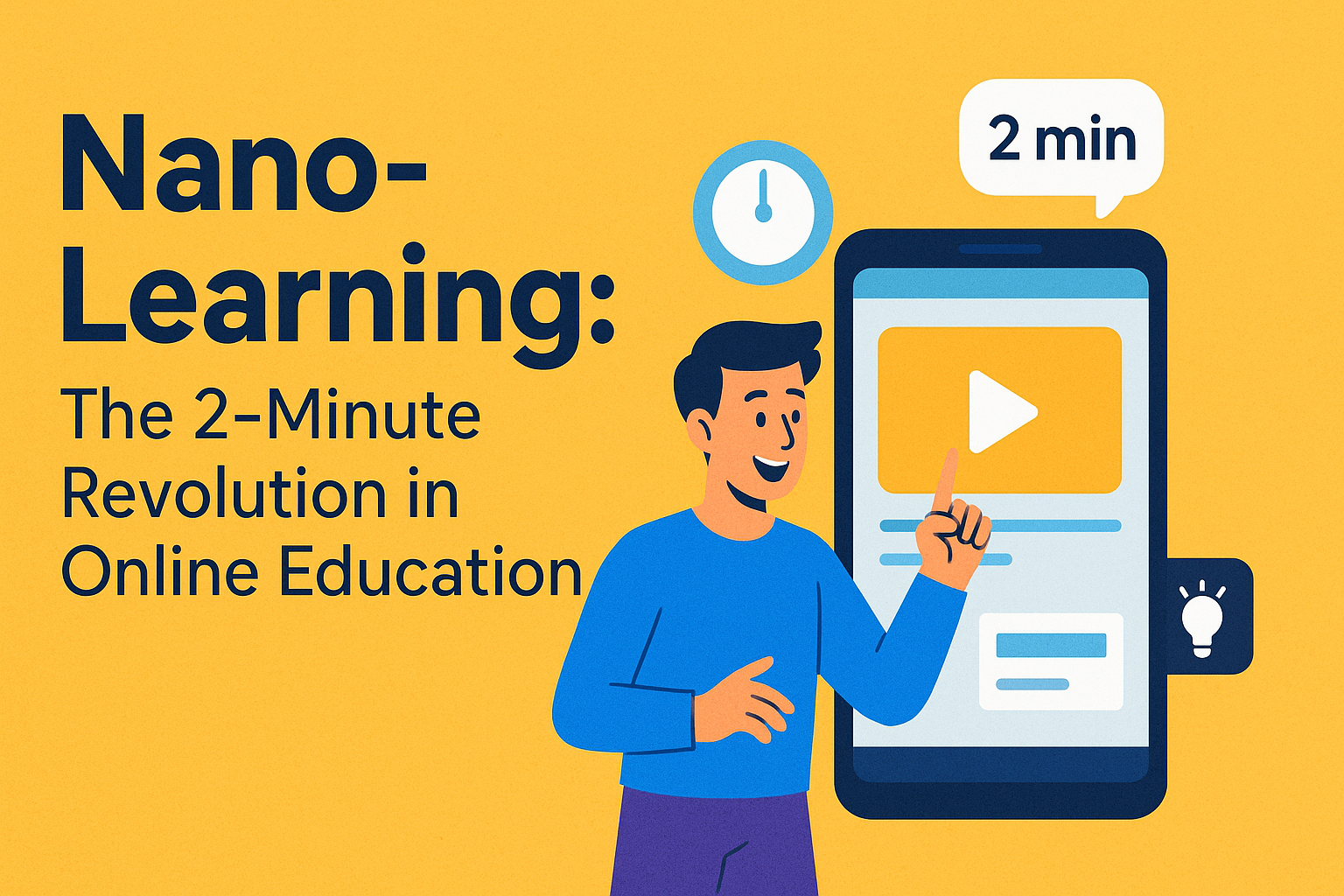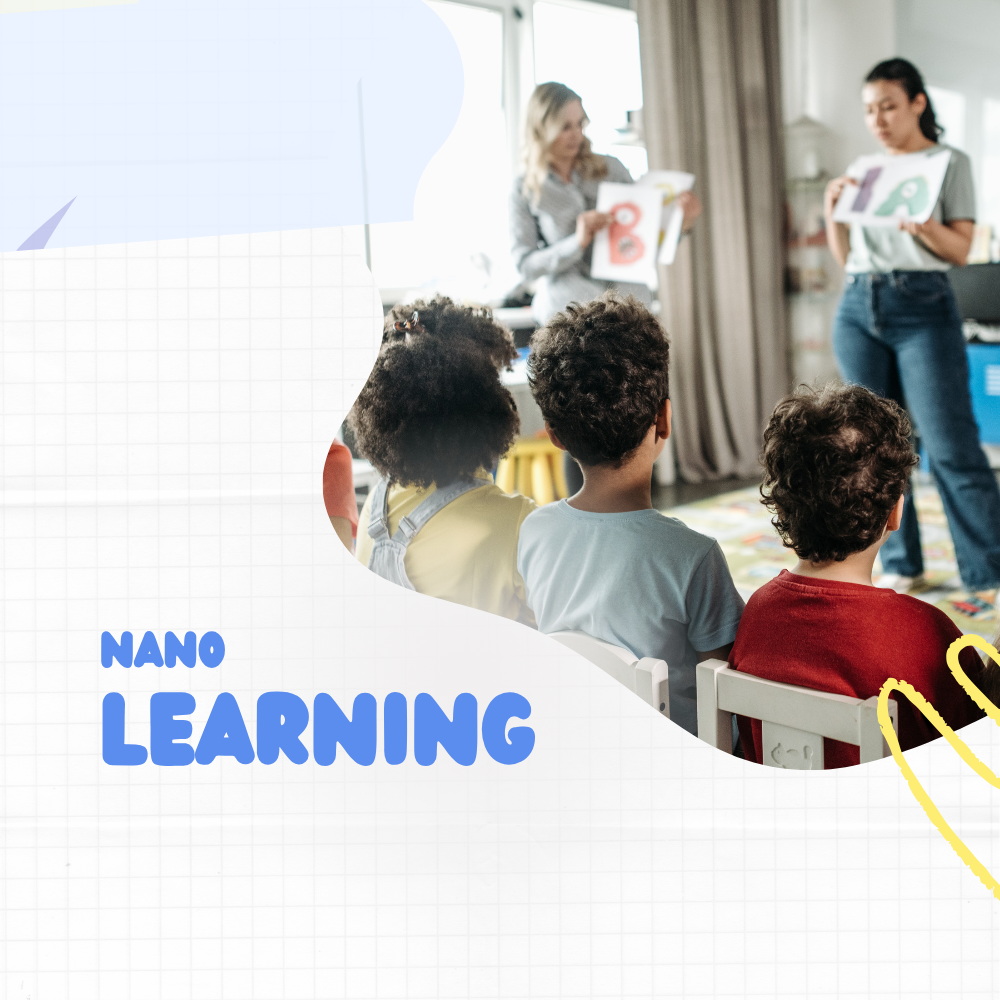Nano-Learning: The 2-Minute Revolution in Online Education
Introduction
In a world where attention spans have been decreasing and time is a luxury, nano-learning is changing the way we learn. Whether we’re talking about hour-long lectures or 10-hour online courses – learning now comes in individual bites of learning between coffee breaks. Micro tutorials, 2-min explainers – learning has now proved to be less is more. It isn’t necessarily faster, it’s simply smarter learning, it’s more engaging, it’s tuned to the modern learner.

The Rise of Bite-Sized Learning
The transition from standard e-learning to nano-learning didn’t happen overnight. It emerged from our rapid digital lifestyles where multitasking is the default and attention is a luxury. Nano-learning exploits this fact by breaking a complete topic down to smaller, digestible segments that can be learned, easily, in 2 minutes or fewer. Platforms such as YouTube Shorts, Instagram Reels, and LinkedIn Learning all have “mini-lessons” that focus on one idea at a time. These bite-sized segments are more attractive and reduce cognitive overload from long lectures. It is also perfect for any opportunity to learn at your convenience instead of your necessity. Nano-learning aquires adaptability in modern life circumstances like learning during a commuter drive, waiting in line, or the in-between moments of life. The portability of nano-learning has made it a popular method of learning for students and professionals – instant value without long-term consequences. Simply put, it is learning that has been integrated into the structure of people’s lives.
Why shorter equals smarter
What we once thought — that shorter learning isn’t better learning — is now contradicted by research in cognition that shows we retain information better when it comes in small, focused segments. Nano-learning is harnessing that principle by removing all of the wasted space and focusing on the heart of the matter within each idea. It also aligns with how we pay attention naturally — in quick bursts of attention. Rather than sitting through an hour commitment to achieve some takeaway, a learner can take away the key learning points in two minutes. This process can be maintained as curiosity is fostered and retrieval is improved. It is a game-changer for busy professionals who can learn a new marketing hack on their lunch break or a new app feature while waiting for their coffee. We aim to foster learning, and then continuing learning, in an easeful way. Nano-learning doesn’t do fear; it does empowerment. In today’s learning environment, we’re learning that being shorter doesn’t mean “cheaping out,” it means using impact effectively at an optimized attention span and smarter engagement.

Nano-Learning Revolution Powered by Tools
The rise of nano-learning would not exist if it were not for the evolution of smart technology and adaptive learning tools. Applications such as Duolingo, Blinkist, and Headway have spearheaded the change in moving learning from long-form education into short, actionable nuggets of content. Using artificial intelligence, these platforms are able to personalize the learning experience and identify what the user may need and when they may need it. These AI-driven experiences even create bite-sized lessons based on the user’s interests, progress, and purpose, and even mood — helping to turn passive scrolling time into active learning time. The popularity of short-form video platforms, as well as podcasts, are also part of this revolution, with a plethora of 2 minute tutorials, explainers, and summaries providing value and sparking further curiosity. Gamification/tools with gamified progress also play a critical role as structural learning strategies such as progress bars, badges, and daily streaks prompt or encourage the learner towards consistency rather than pressure to completing the learning. Learning now is addictive – in a good way, we can learn quickly, with little effort, in an engaging way, and is easily accessible on the go. These tools have created an engaging, more educated experience by providing their users with tools designed with the learning process in mind. Together, these tools have created a new learning ecosystem in which you can always have access to various forms of learning – and education – at your fingertips – quite literally, the education revolution is at your phone.
The Future of Learning in Two Minutes
Nano-learning is more than a trend; it is the next phase of the evolution of learning. As attention spans continue to shorten and technology becomes even more intermixed into our daily lives, learning will continue to become micro and personalized experiences. Imagine a future when your smartwatch reminds you to take a 90-second lesson while you are having your morning coffee, or when your dashboard in your car provides you of a quick lesson on leadership while you are stuck in traffic. Education will no longer favored classrooms or long modes of learning; it will reside in our lives whenever we choose. The next phase will be an increase in personalization where an artificial intelligence does not only curate content but also delivery styles catered to different moods, learning speeds, and learning styles for each user. We already see schools and companies are beginning to implement nano-learning to promote engagement and retention. And the best part of nano-learning is how accessible it is; typically, individuals have the opportunity to grow their intelligences in a matter of minutes anywhere in the word. The 2-minute revolution is more than simply learning more efficiently, it’s learning in a way that creates a habit of learning as part of one’s everyday life.
Conclusion
Nano-learning is evidence that meaningful learning doesn’t take hours — it just needs to be intelligent learning, focused learning and easily accessible. The beauty of nano-learning is that it takes advantage of those spare moments and brings personal growth into the everyday experience. As learning technology develops, this 2-minute model will become even smarter and more personalized. The future of learning isn’t about doing more — it’s about learning more intelligently one short lesson at a time.
